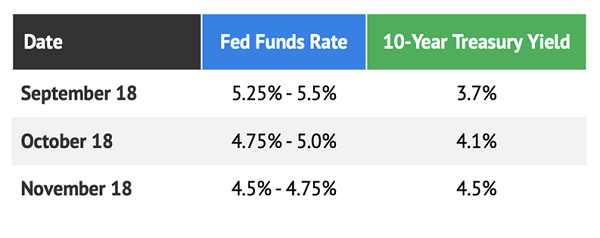Trump and Powell: The Financial Showdown Unfolds
Six summers ago, Donald Trump expressed concern to Republican donors about the direction of the Federal Reserve under Jay Powell, anticipating a “cheap money” strategy. Instead, Powell raised interest rates, making borrowing more expensive, which left Trump unsettled.
For real estate moguls like Trump, high interest rates can be detrimental. In 2018, these rates presented challenges to his growth-driven agenda. He even mentioned on Fox Business that the Fed posed his “biggest threat.”
Trump admitted to the Wall Street Journal he “maybe” regretted choosing Powell, coining the term “appointer’s remorse.” His sharpest comment likened Powell to a golfer lacking finesse:
“The Fed is like a powerful golfer who can’t score because he has no touch–he can’t putt!”
Fast forward to today, and a major financial rematch appears imminent between Trump and the incumbent Fed chair. As tensions rise, a reporter confronted Powell, questioning if he would step down if Trump requested it.
Powell’s response was clear and confident: “No.”
When asked if Trump could demote him, he replied, “Not permitted under the law.” His firm stance has drawn significant media attention, but underlying this confrontation may be crucial hints related to Trump’s growth plans.
Interest rates have surged since Powell’s rate cut in September, a surprising twist given his previous stance. The 10-year Treasury yield has skyrocketed since Powell’s decision to lower rates. On September 18, he cut the Fed Funds Rate by 50 basis points, but the 10-year yield simultaneously jumped from 3.7% to 4.5% in just a few weeks.
This situation has sparked laughter among bond investors, questioning Powell’s timing: Why are you cutting rates when inflation is not under control? As a result, they demanded higher returns for their long-term investments.
In response to these pressures, Powell cut rates once more.

This raises questions about Powell’s judgment: Is he struggling to interpret inflation data accurately? The U.S. economy grew by 2.8% in the third quarter, with the Federal Reserve Bank of Atlanta projecting a 2.7% expansion for the fourth. These solid economic figures hardly warrant rate cuts.
Additionally, inflation is proving to be persistent. The Consumer Price Index (CPI) rose by 2.6% in October, up from 2.4% in September. Powell aims for a 2% inflation target, which will be difficult to achieve if he continues with rate cuts. With Trump’s ambitions for economic growth, tariffs, and immigration reform likely to influence inflation, the challenge grows.

Examining historical trends, GDP and CPI data suggest the need for sustained higher rates. The 10-year Treasury yield, which rose from 1.9% on Election Night 2016 to a peak of 3.2%, caused significant disturbance in bond markets. If history repeats, investors may shy away from Treasuries, questioning the appeal of lending to the government at 4.5% annually under the current economic climate.
For contrarian investors, there exist opportunities beyond conventional treasury bonds. The volatility in the bond market is positive for MarketAxess Holdings (MKTX), a bond trading platform that returned 239% during Trump’s first term, also increasing its dividends four times for a cumulative 100% gain.
Founded in 2000 by fintech pioneer Rick McVey, MKTX aimed to revolutionize bond trading by eliminating inefficient phone-based trades with innovative technology. Investing in founder-led companies can often lead to innovation and growth, ensuring a forward-thinking approach.
Last year, McVey and his team introduced Adaptive Auto-X, an algorithmic-driven trade execution tool, adding to MKTX’s capabilities and market share. Within the last year, the company increased its share from 20% to 20.9%, alongside a growing trade volume:

As tensions escalate between Powell and Trump, traders may favor efficiency, leading to increased trading activity, and thereby enhancing profits for MKTX. The potential for a similar 239% return remains, regardless of Powell’s ability to manage inflation effectively.
While the prospects for MKTX shine brightly, not all dividend stocks are likely to fare as well under these conditions. Many traditional dividend stocks mimic bonds, risking major losses if interest rates rise sharply.
Instead of investing blindly in bonds or traditional dividend stocks, investors should consider “dividend magnets” that can benefit from Trump’s policy agenda. This is an opportune time for savvy investments. Discover five growth opportunities poised to thrive under Trump 2.0.
Also see:
- Warren Buffett Dividend Stocks
- Dividend Growth Stocks: 25 Aristocrats
- Future Dividend Aristocrats: Close Contenders
The views and opinions expressed herein are the views and opinions of the author and do not necessarily reflect those of Nasdaq, Inc.

